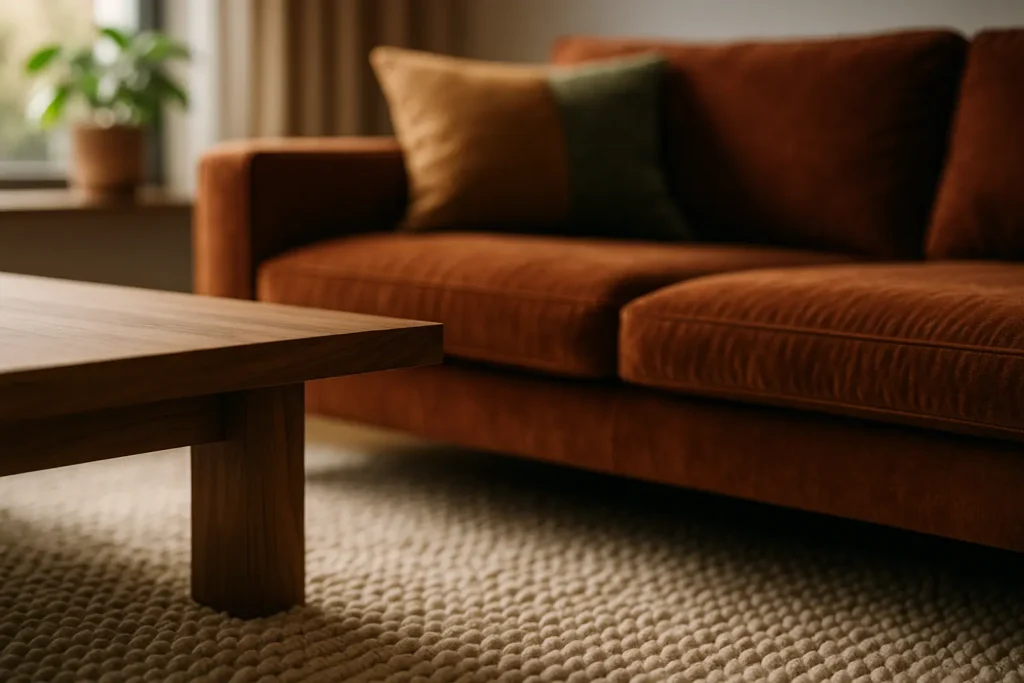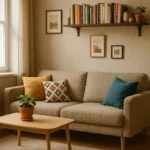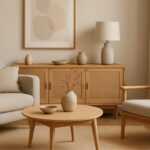In our quest to craft spaces that resonate with our soul, we often overlook the transformative power of texture. It’s not just about what we see; it’s about what we feel when we engage with a room. Texture in interior design is the silent orchestra conductor, guiding the flow of emotions, enhancing visuals, and creating harmony within our everyday environments. Let’s delve into why texture is the unsung hero in the world of decor, promising to redefine how we perceive and interact with our spaces.
Understanding the Essence of Texture in Interior Design
The role of texture in interior design extends far beyond mere aesthetics. It is the intricate dance between different materials and finishes that can transform a mundane room into a living, breathing sanctuary. When we speak of texture, we refer to the tactile quality of surfaces that can be both seen and felt. From the roughness of a brick wall to the softness of a velvet sofa, textures play a pivotal role in defining the personality and character of a room.
The Visual Impact of Texture
We often forget that textures can alter the visual weight of objects within a space. By varying textures, we can create depth and interest, preventing our rooms from appearing flat and uninspired. For instance, a plush rug can anchor a room by contrasting seamlessly with sleek and metallic furniture. Similarly, the interplay of natural materials like wood and stone can evoke earthy warmth, making our home feel more inviting.
The Tactile Connection
Textures invite touch, encouraging a physical connection with our surroundings. A well-placed woven basket or a rough-hewn wooden shelf can evoke curiosity, compelling us to engage more intimately with the space. This tactile engagement fosters a sense of comfort and belonging, as each texture speaks its unique language.
Emotional Resonance
Textures evoke emotions. The coolness of marble, the richness of leather, or the ruggedness of exposed beams can all contribute to a variety of emotional responses. By intentionally layering different textures, we can craft environments that reflect our desired mood and intention, whether it’s the serenity of a bedroom or the vibrancy of a living area.
Curating Textures: The Key Elements
In the art of designing with textures, selecting the right elements is crucial. Each texture tells a story, and our goal is to combine them in a narrative that speaks to our personal style.
Choosing the Right Materials
Materials are the building blocks of texture. Consider the rich texture of a linen curtain juxtaposed against a smooth glass tabletop. The choice of materials should align with the theme and purpose of the space. For instance, natural fibers like cotton or wool can bring warmth and comfort, while industrial materials like concrete and steel contribute to a modern, minimalist aesthetic.
Layering Textures for Depth
Layering is an essential technique in creating a richly textured environment. Start with larger surfaces like walls or floors and gradually add layers of texture through furniture, accessories, and textiles. A room with wooden floors, leather sofas, and textured cushions creates a multilayered effect that is visually compelling.
Harmonizing with Color
Color and texture go hand in hand. While textures add depth, colors enhance their visual impact. A monochromatic color scheme can be enriched by varying textures — think of a white room with a fluffy rug, matte walls, and glossy ceramics. The interplay between color and texture results in a dynamic space that feels both cohesive and individualistic.
Balancing Contrast and Complement
Finding the right balance between contrasting and complementary textures is key. While too much contrast can seem chaotic, a well-balanced mix can create intrigue and dynamism. Pairing a rough brick wall with a silky curtain can result in a harmonious yet lively atmosphere.
Innovative Texture Trends in Modern Interiors
The world of interior design is constantly evolving, with texture trends reflecting our changing needs and preferences. As we explore these modern trends, we aim to create spaces that are not only functional but also emotionally and aesthetically satisfying.
Biophilic Design Elements
Incorporating natural textures through biophilic design is gaining momentum. This trend celebrates nature by integrating natural elements like live-edge timber, bamboo, and stone. These textures bring an organic feel, creating a calming, restorative environment that reconnects us with the natural world.
Sustainable Textures
Eco-conscious textures are becoming increasingly popular as we prioritize sustainability in design. Recycled materials, such as reclaimed wood, and upcycled textiles, offer a unique aesthetic while minimizing environmental impact. These innovative textures not only contribute to a sustainable lifestyle but also add character and history to our interiors.
Technological Textures
As technology advances, so do our options for textures. Smart materials, like responsive fabrics and digital textures, are emerging in modern interiors. These futuristic elements not only enhance the aesthetic appeal but also adapt to our living needs, offering solutions like adjustable lighting or climate control.
The Revival of Retro Textures
Retro textures are making a comeback, as designers draw inspiration from the past to create contemporary classics. Materials like terrazzo, velvet, and rattan add a nostalgic yet modern touch to our homes, blending the old and new seamlessly.
Crafting a Textured Space: Practical Applications
Transforming a room with texture doesn’t require a complete overhaul. By making thoughtful choices and highlighting key elements, we can achieve a visually and tactilely balanced space.
Focus on Statement Walls
A statement wall can be a powerful way to introduce texture. Consider textured wallpaper, stone cladding, or exposed brick to create a striking focal point. These walls not only add depth but also draw the eye, making the space feel more dynamic.
Selecting Furniture with Texture
Incorporate furniture pieces that boast rich textures, such as a suede armchair or a woven rattan chair. These pieces add layers of interest and can stand out as conversation starters. By mixing sleek and rough textures in furniture, we achieve a balanced composition.
Utilizing Textured Accessories
Accessories like cushions, throws, and rugs offer an easy way to introduce texture without drastic changes. A mix of knit, fur, or embroidered textiles can instantly elevate the comfort and visual appeal of a space. These elements are versatile, allowing for seasonal or mood-based swaps.
Optimizing Lighting for Texture
Lighting plays a crucial role in highlighting textures. Directional and ambient lighting can enhance the texture’s visual impact. Shadows cast by textured surfaces add drama, while well-lit textures appear more vibrant and alive.
Thoughtful Use of Natural Materials
Incorporate natural materials like wood, stone, or clay to create a warm, inviting atmosphere. These elements add a sense of timelessness and elegance to any space, reinforcing a connection to nature.
As we stand on the brink of innovation in interior design, texture emerges as a pivotal element in shaping our spaces. It offers us the tools to create environments that not only look remarkable but feel comforting and engaging. By embracing textures, we redefine our living spaces into reflections of our identity, values, and aspirations. Let us embark on this journey of discovery, weaving together the tactile narrative that turns houses into homes and spaces into stories. Together, let’s touch the future with the tangible beauty of texture.
FAQ
What is the significance of texture in interior design?
Texture in interior design plays a crucial role by adding depth and dimension to a space. It can evoke emotions, create contrast, and enhance the visual appeal of a room. The interplay of different textures can make a space feel more inviting and dynamic.
How can texture transform a minimalist decor style?
In minimalist decor, where the color palette and furnishings are often neutral and understated, texture becomes a vital tool for adding interest. By incorporating elements like a textured rug, a woven throw, or a sculptural lamp, you can introduce warmth and character without overwhelming the simplicity of the design.
What are some ways to incorporate texture into a home?
There are numerous ways to add texture to a home, including using textiles like rugs and curtains, selecting furniture with varied materials such as wood or metal, and incorporating plants or wall art. Even small details like decorative pillows or textured paint can make a significant impact.
Can texture influence the perception of space in a room?
Yes, texture can significantly alter how we perceive space. Smooth, glossy surfaces can make a room feel larger and more open, while rough, textured materials can create a sense of coziness and intimacy. By strategically choosing textures, you can manipulate a room’s atmosphere and perceived dimensions.
Is it possible to overdo texture in a room’s design?
While texture can enhance a room, it’s important to maintain balance. Overloading a space with too many competing textures can make it feel cluttered and chaotic. It’s best to focus on a few key textured elements and let them shine, ensuring a harmonious and cohesive design.



